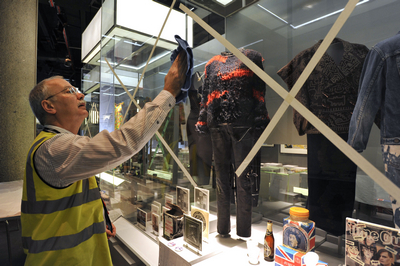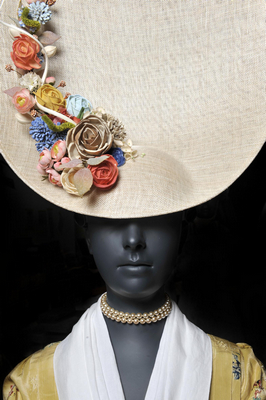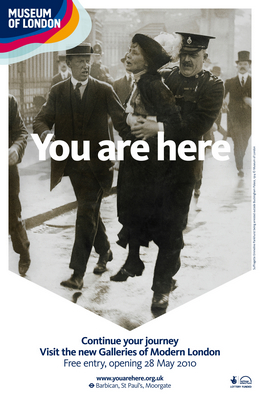Antony Robbins, 48, joined the Museum of London switching to the museum sector from a life-long career providing communications and policy advice to international development organisations. Robbins led communications teams at the UK's Overseas Development Institute, the British government's Department for International Development and the aid agency CARE International. This work took him to all corners of the globe, including Ethiopia, India, Bolivia and Croatia. In 2009, he joined the Museum of London, which tells the story of London from 46,000 years BC to the present. It is an organisation with a world view. Robbins was hired to oversee the re-launch campaign of its new Galleries of Modern London. These pound;25m galleries now enable the museum to tell the complete story of the modern capital - following its rebuilding after the Great Fire of London in 1666. Here, Robbins describes the journey to the re-launch; the campaign that resulted; the industry awards that followed and the legacy left by the museum's re-birth.
 The Museum of London - a hidden gem
The Museum of London - a hidden gem
The Museum of London launched in 1976. It was part of the Barbican Estate - a bold, modernist vision of city living. This new urban plan for the City Of London bought housing, education, libraries, arts and performance venues all into one central location. The museum was built on the fringes of the capital's financial district - on the foundations of a part of the city almost entirely destroyed in World War Two air raids.
It was a good museum from the very start. It was not well know but it had always had fantastic collections. These told the story of London but only up to the first half of the 20th century. But, by 2008, the museum was looking a little faded. Research showed that many Londoners knew little about it or saw it as a ls"one-visit' destination.
It was seen as rooted in London's history and heritage and not sufficiently connected to the lives of Modern Londoners. Visitors described the museum experience as ls"educational'. We wanted it to be educational but also a good day out. People who loved the museum - and there were many - described it as a hidden gem. We wanted it to be hidden no more. And we wanted to bring the story of London right up to the present day.
The museum that went from good to great
The Museum was re-launched in 2010 with its Galleries of Modern London. These tell the story of the City from 1666 to the present day. They display over 7,000 objects - from vehicles, paintings, photographs, jewels and weapons. Over 490,000 visitors visited them in their first year of opening. The re-launch included the opening of the state-of-the-art Clore Learning Centre. This provided free facilities and underlined the museum's commitment to life-long learning for all.
 Great design helped put the Museum of London back on the map
Great design helped put the Museum of London back on the map
We worked with a PR agency to devise a new, more powerful and contemporary brand and visual ID - one that chimed with our visitors. The re-branding was carefully-timed as part of the countdown to the launch of our Galleries of Modern London.
In the immediate lead-up to 2010 launch, we devised the You are Here campaign. The look and feel of the campaign was just right. Early responses to it were very positive. The anticipation created in the launch countdown led to a brilliant opening night, fronted by veteran Hollywood actor and proud Londoner, Sir Michael Caine. The campaign won many prestigious industry awards, Visitor numbers built steadily and the museum attracted pound;800,000 of free media coverage.
Re-engaging Londoners - central to the Museum of London's re-launch strategy
The re-brand re-positioned us both as a contemporary and connected museum and as an exciting new destination for Londoners and overseas visitors alike. The You are Here campaign was a playful take on our collections. It used images ancient and modern, black and white and colourhellip;They provided a striking and witty snapshot of London life through the ages. And this appealed across different generations and diverse audiences.
Developing award-winning Smartphone apps
Our venture into the world of augmented reality resulted in Streetmuseum - our first ever Smartphone app. This ls"museum in your pocket' superimposed 250 photos and paintings and onto current London locations using the GPS facility in iphones and Android Smartphones. So far it's been downloaded 350,000 times. Streetmuseum turned us, overnight, into a market leader for heritage organisations. We were pushing the boundaries of what digital technology was able to do to open up our collections and archives. It also ls"put the museum onto the streets of London'.
The app additionally helped us overcome that age-old problem - of the conservation of precious images versus public access. Many other museums asked our advice as the awards - from the prestigious to the more obscure - mounted up.
 Getting internal buy-in
Getting internal buy-in
Museums are inherently conservative organisations. But we had (and still have) some excellent curators willing to take risks. The blueprint for the Galleries of Modern London was the result of their vision and expertise - and the campaign sprung out of that. But there were concerns about the extra workloads involved. Researching captions for the campaign images and especially for the app took time. But some of the curators became true ls"digital champions'. The museum was encouraged by the public support of UK Arts Minister Ed Vaizey. After that, there was no going back.
The future
The Museum of London's re-positioning continues of course. We cannot stand still; we can only go forward. We are exploring all that digital technology and interpretation has to offer as we prepare for our next major capital projects. On the immediate horizon are the re-launch of our Roman Galleries and the re-invigoration of the galleries in our sister museum, the Museum of London Docklands, in the heart of London's East End. This museum is about to enjoy an injection of Olympic investment in following its role over the summer as the home of the German Olympic and Paralympics team during the games.